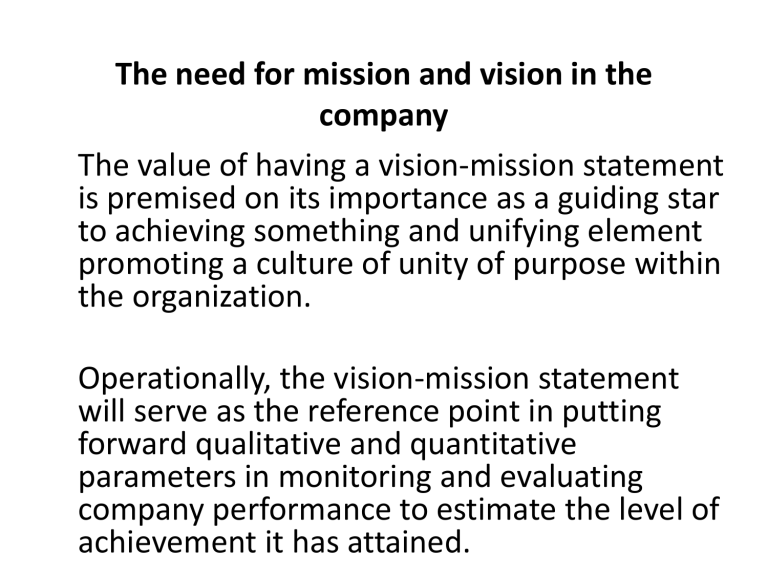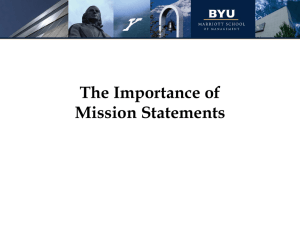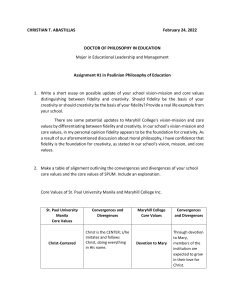vision-mission

The need for mission and vision in the company
The value of having a vision-mission statement is premised on its importance as a guiding star to achieving something and unifying element promoting a culture of unity of purpose within the organization.
Operationally, the vision-mission statement will serve as the reference point in putting forward qualitative and quantitative parameters in monitoring and evaluating company performance to estimate the level of achievement it has attained.
Vision vs. Mission Statement
STRATEGIC VISION- concerns a firm’s future business path- “where we are going”. It addresses the following specific concerns: a. Markets to be pursued b. Future technology-product-customer focus c. Kind of company that management is trying to create.
d. Deciding future business position to stake out
e. Providing long term direction f. Giving a firm a strong identity
CHARACTERISTICS OF STRATEGIC
VISION
A. Future technology-product-customer focus
B. Geographic and product markets to pursue
C. Capabilities to be developed
D. Kind of company management is trying to create
E. Charts a company’s future strategic course
f. Defines the business make up for 5 years or more g. Specifies the future technology-productcustomer focus h. Indicates capabilities to be developed i. Requires managers to exercise foresight
ELEMENTS OF STRATEGIC VISION
1. Use the mission statement as a starting point.
2. Develop a strategic vision that spells out a course to pursue.
3. Communicate the vision in a clear and exciting manner
ELEMENTS OF MISSION STATEMENT
• Talks about the answers to the question-
“ What are we here for” following the given elements: a. It defines current business activities b. It highlights bounderies of current activities c. It conveys who we are, what we do, and where are we now.
TWO CLASSIFICATIONS OF MISSION
STATEMENTS
A. NARROW MISSIONa. serves as a beacon as to where the top management intends to take the firm.
b. Usually done by smaller business concerns or stand-alone business organization hence, its mission statement is usually focused.
c. Clear enough to specify real arena of interest.
B. BROAD MISSION STATEMENT a. Usually done by large business organizations that are highly diversified or conglomerate in nature.
TYPES OF MISSION STATEMENTS
• Product mission statement
• Ben & Jerry’s Ice Cream: "To make, distribute
& sell the finest quality all natural ice cream & euphoric concoctions with a continued commitment to incorporating wholesome, natural ingredients and promoting business practices that respect the Earth and the
Environment."
User mission statement
Pfizer – Pharmaceuticals
• We will become the world’s most valued company to patients, customers, colleagues, investors, business partners and the communities where we work and live.
Brand
• Yahoo is a brand of place, where many great things happen—for no particular purpose
Environment / industry change
COCA-COLA
• To refresh the world...
• To inspire moments of optimism and happiness...
• To create value and make a difference
TYPES OF VISION STATEMENTS
People: Be a great place to work where people are inspired to be the best they can be.
Portfolio: Bring to the world a portfolio of quality beverage brands that anticipate and satisfy people's desires and needs.
Partners: Nurture a winning network of customers and suppliers, together we create mutual, enduring value.
Planet: Be a responsible citizen that makes a difference by helping build and support sustainable communities.
Profit: Maximize long-term return to shareowners while being mindful of our overall responsibilities.
Productivity: Be a highly effective, lean and fastmoving organization.





